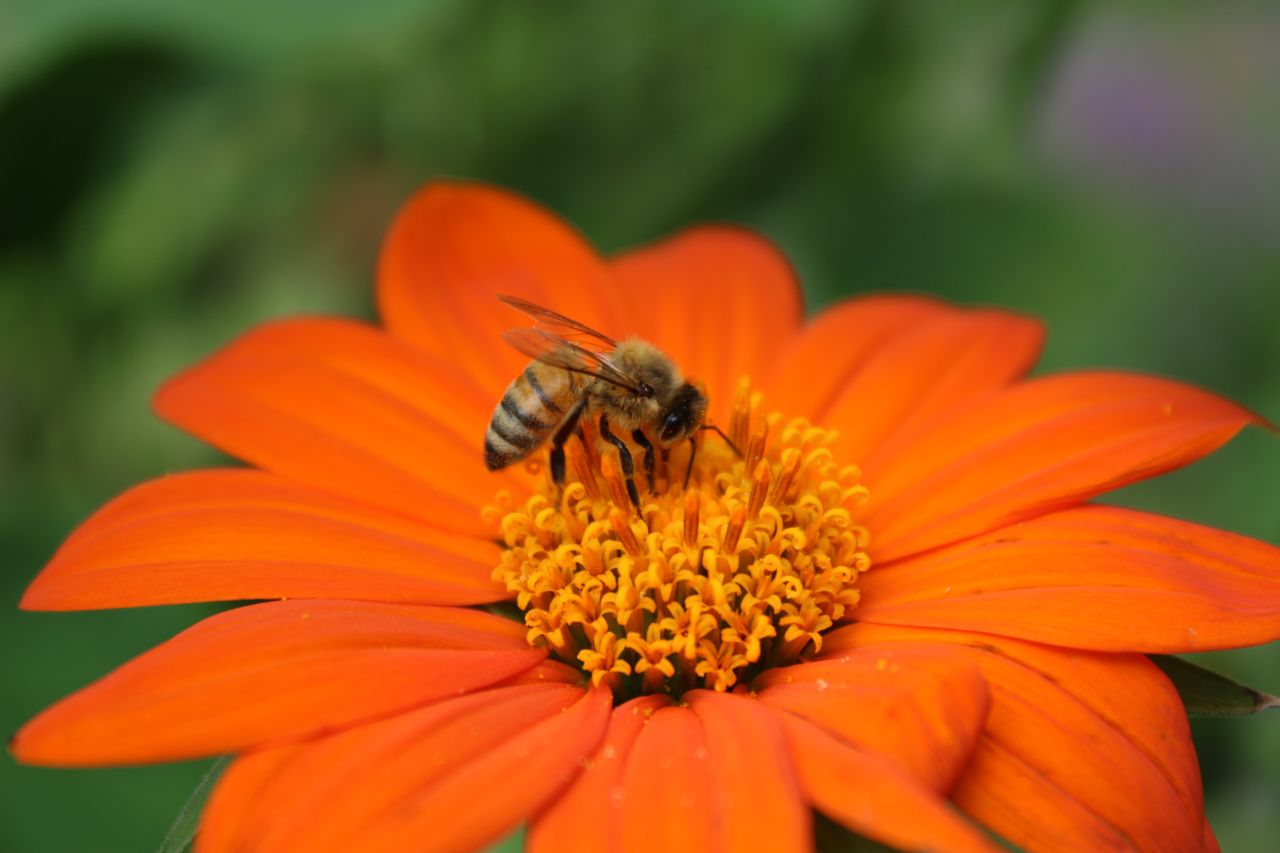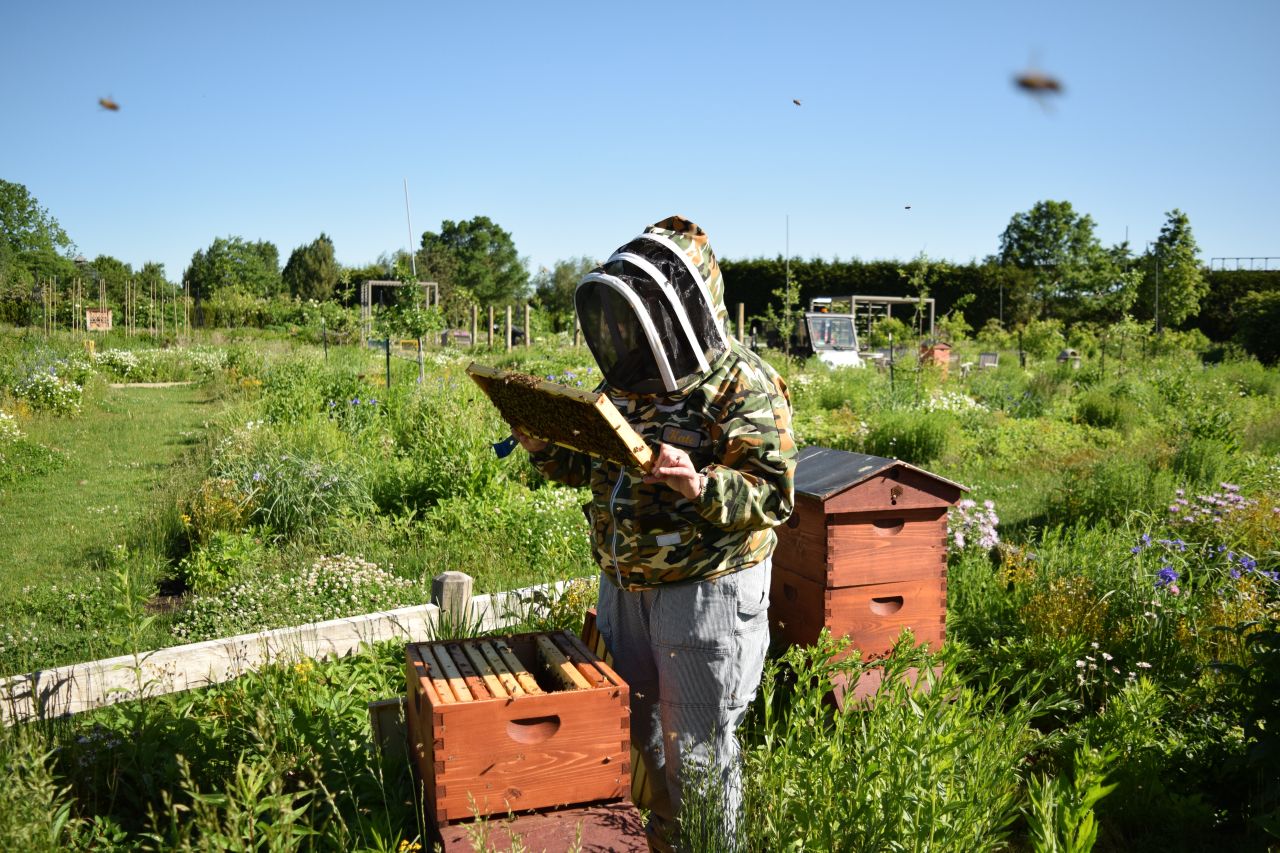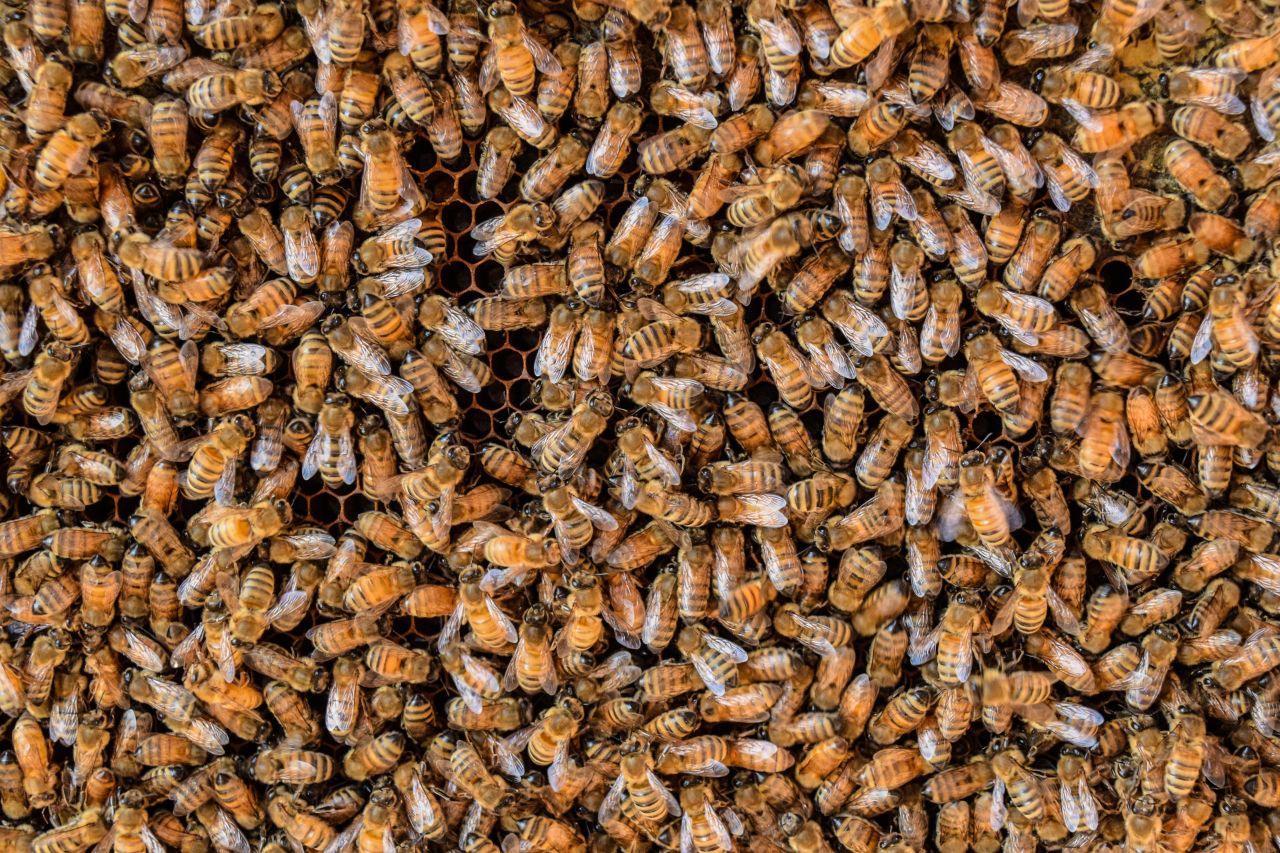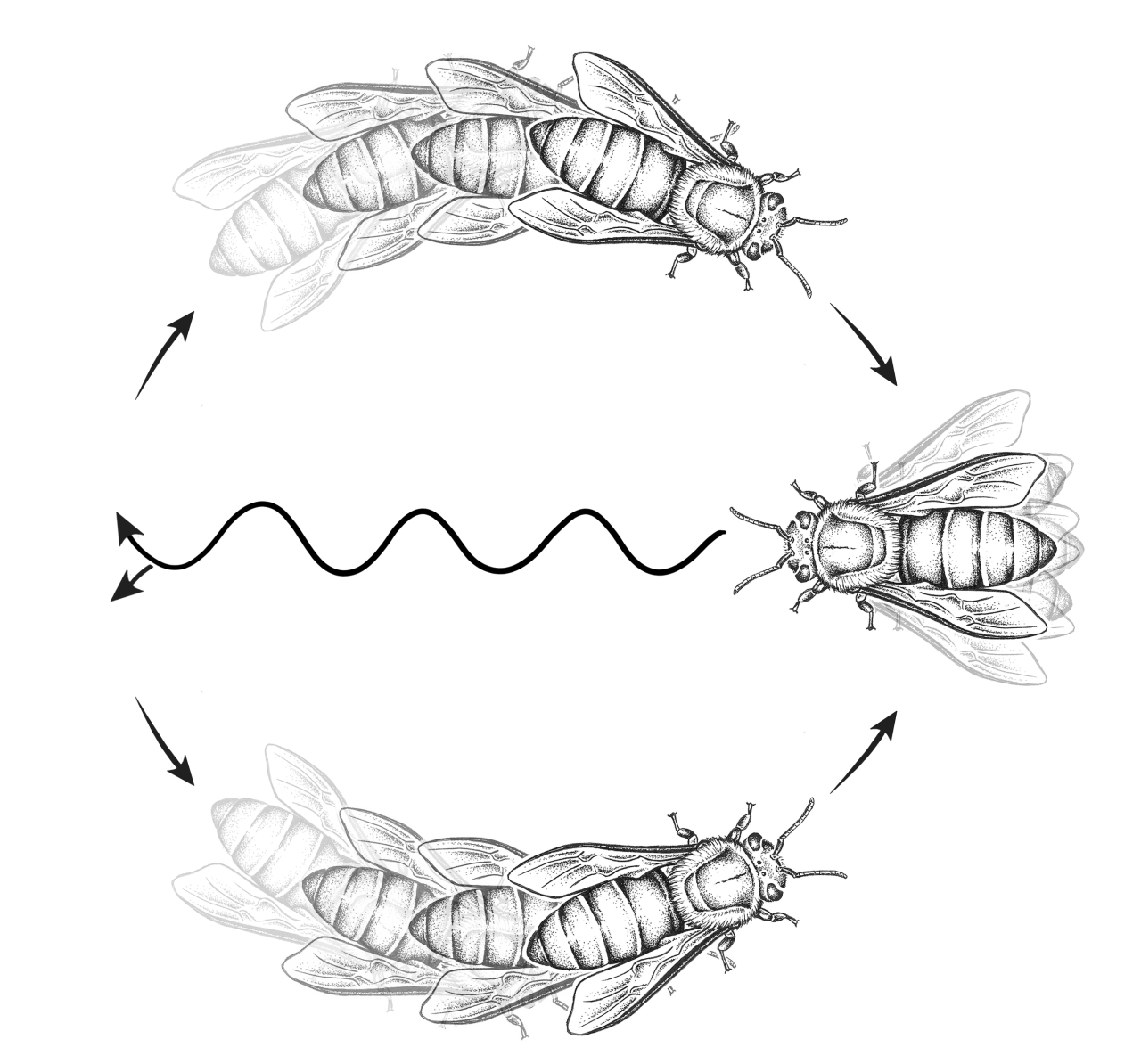August 16, 2023
Happy National Honey Bee Day!
National Honey Bee Day is celebrated on the third Saturday of August. This year the holiday falls on Saturday, August 19th.

Heather Frantz, Education Program Specialist
Of the 20,000 bee species worldwide, one is arguably the most recognized and culturally significant; the western honey bee (Apis mellifera). Found on every continent except Antarctica, the western honey bee is one of seven species in the honey bee genus Apis.
The western honey bee is a domesticated species, as humans manage their care and reproduction. The practice of beekeeping is called apiculture and was first recorded in 2400 BCE in ancient Egypt. Honey bees have since been woven throughout human history, appearing in the poet Virgil’s story of Orpheus and Eurydice in ancient Rome, Aristotle’s scientific studies in ancient Greece, the philosophy of Confucius in China, and the microscopic drawings of Francesco Stelluti in the Italian Rennaissance.
Beekeeping was revolutionized in Pennsylvania by Lorenzo Langstroth in 1862 when he created the Langstroth hive- a portable hive with removable frames that allowed for active management. This modern hive remains the industry standard today.

Kate Anton, research technologist for the Grozinger Lab at Penn State inspects a honey bee hive at The Arboretum at Penn State
Credit: Heather FrantzHoney bees are critical in U.S. agriculture, contributing $15 billion in pollination services annually and producing over 100 types of fruit, vegetables, and nuts according to the USDA. In 2017, honey was valued to contribute an additional $3.2 million according to USDA-National Agricultural Statistics Service. While there are over 400 species of bee in Pennsylvania that pollinate, we have the honey bee specifically to thank for many of our foods. Why is the western honey bee such a pollination powerhouse?
Strength in Numbers
Sociality is not common among bee species. In fact, only 1 in 10 bee species is social, living cooperatively in a hive. Of the social bees, the number of individuals within a hive depends on the species. Some bumble bee species have colonies with a couple dozen to a couple hundred workers. Honey bees on the other hand have very large hives. A single western honey bee colony can have upwards of 50,000 female workers. Only the oldest workers are foragers, leaving the hive and contributing to pollination while collecting pollen and nectar from flowers. Before becoming a forager, young bees have other jobs including nurse, guard, comb builder, and undertaker.

Honey bees on a frame of comb
Credit: Heather FrantzCommunication is Key
Honey bees are effective pollinators because they have coordinated foraging efforts. Workers perform a series of movements called the ‘waggle dance’ to instruct other worker bees on where to travel to find a particular food source. This dance communicates the distance, direction, and quality of the food source.
On a vertical frame, a waggle dance performed at 12 o’clock (straight up) communicates to other bees that the food source is 0° from the sun in relation to the hive, or straight from the hive toward the sun. In the image below, the worker bee is performing the waggle dance 90° to the left. This indicates that the food source she has found is 90° to the left of the sun in relation to the hive.
The length of the ‘waggle’ portion of the dance indicates the distance of the food source. The longer a female waggles her abdomen before circling around to dance again, the farther away the food source. A worker bee will perform the waggle dance more rapidly for a higher quality food source, alerting her sisters to nutritious flowers.

Waggle dance illustration
Credit: Michael HillBecause the western honey bee recruits forager bees through the waggle dance, they are said to have high floral fidelity. A colony of honey bees will visit a specific patch of flowers until the pollen or nectar is exhausted. This behavior is beneficial for farmers because it ensures high visitation by honey bees to what is blooming in the field. For pollination to occur, bees need to carry pollen from plant to plant of the same species. With high flower fidelity, honey bees can be superior pollinators.
Working Year-Round
Across bee species, most adult bees have a lifespan of a few weeks and are only seen during a small window of time during the growing season. For example, the blue orchard bee (Osmia lignaria) is active May-June, and is used for the commercial pollination of spring-blooming fruit trees. However, they are not ideal for crops such as cranberries that bloom in July. After just a few weeks, the adult's life is over and the species is not seen again until their offspring emerge the following year.
Adult honey bees also have a short lifespan of 4-6 weeks, but a honey bee colony produces overlapping generations with active foraging bees from early spring to fall frost. You can count on the pollination services of honey bees for the entire growing season.
To learn more about honey bees, visit the Center for Pollinator Research at Penn State’s website, pollinators.psu.edu and follow them on social media, @PSUPollinators on Instagram, Facebook, and Twitter.
